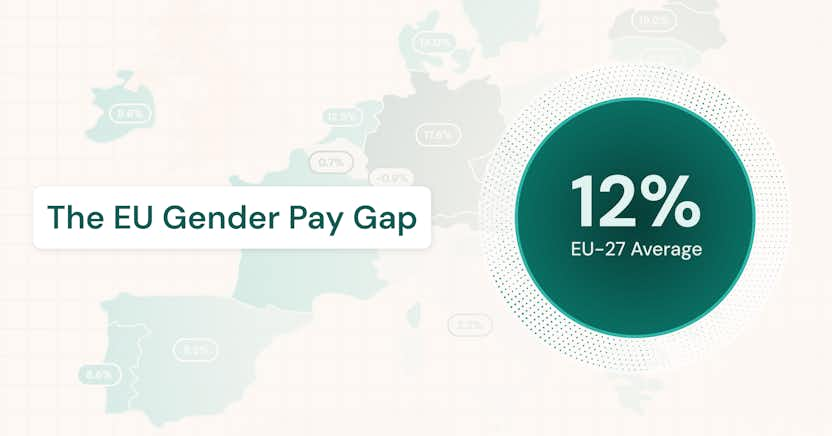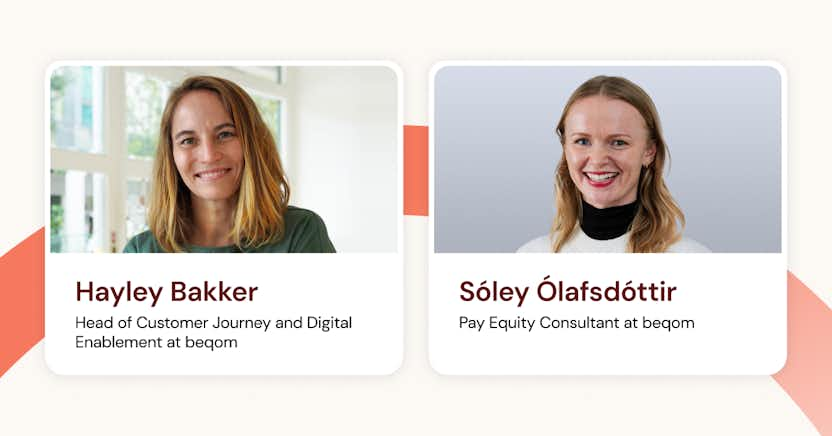Bring Out Greatness in the Year End Review

Learn more about the following beqom products
As another year draws to a close, the great ritual of the year end performance review begins to take center stage. This is when we, as HR professionals, see the good, the bad, and the ugly in our review process.
The year end review has been hotly debated and is possibly the most criticized aspect of standard performance management practices. However, it is also still the most widely used method of evaluating employee performance and delivering feedback. So, why does it remain the cornerstone of the performance management process and how can we bring out the “great” in its purpose?
Year end is a time for HR reflection
The end of the year is a time for reflection, to take a step back and consider what went well in your HR processes – and what not so well, to evaluate what environment, what type of work, and what way of working helps us be at our best. Exploring all of this gives us signposting to where our strengths and challenges lie and how we can bring out the best in ourselves as individuals and in our people as an organization.
According to Gallup, only 14% of employees strongly agree their performance reviews inspire them to improve. They further found that only 29% of employees strongly agree that the performance reviews they receive are fair, and only 26% strongly agree they are accurate.
On the management side, another Gallup survey found that 95 percent of managers are dissatisfied with their organization’s review system. This syncs with research from CEB showing nearly all managers (95 percent) are dissatisfied with how performance appraisals are done at their company, and most HR professionals (90 percent) don’t even think the appraisals are accurate.
Fundamentally people don’t like to be judged, and especially don’t like being compared to others. SHRM found that 57 percent of individuals surveyed reported that the annual review made them feel they were in competition with co-workers. But most of all, people don’t like processes they see as unfair; and 71% of American employees thought that their evaluations had fairness issues.
As the survey results show, the application of ratings has generally failed to inspire us as humans. Many employees seem to be deflated by the idea that after a hard year’s work, commitment, and dedication, someone labels you as “fully meeting expectations”. Most likely, you won’t run home to your partner to tell them your good news of how you fully met expectations. And let’s face it, 70-80% of your organization face that scenario, thanks to our bell curves and calibrations. However, unraveling ratings isn’t as easy as it sounds and it’s not for every organization.
What’s wrong with the end of year review?
Annual performance reviews and ratings, while still a common practice in many companies, can come with a number of challenges:
- Subjectivity: Ratings can be influenced by personal biases, which might not accurately reflect an employee's actual performance.
- Recency Bias: Often, the most recent events or behaviors can disproportionately influence the overall rating, overshadowing the entire year's performance.
- Limited Feedback Frequency: Annual reviews mean feedback is infrequent, potentially leading to missed opportunities for timely improvement or recognition.
- Demotivation: Employees might feel demotivated if they receive criticism or praise only once a year, especially if it's not detailed or constructive.
- Comparative Evaluation: Ranking employees against each other can create a competitive environment that may lead to stress and unhealthy competition among team members.
- Inadequate Goal Alignment: If an employee's objectives and the company's goals shift during the year, the annual review might not accurately reflect their contribution.
- Inflexibility: Annual reviews might not accommodate the dynamic nature of certain job roles where progress and achievements occur more frequently.
- Administrative Burden: Conducting comprehensive annual reviews for all employees can be time-consuming for managers, potentially impacting other crucial tasks.
- Lack of Development Focus: The focus on past performance might hinder discussions about future goals, skill development, and career growth.
To name a few.
Why not just do away with end of year performance reviews?
Given their challenges and unpopularity, why not just get rid of performance evaluations? Removing ratings all together is in fact one possible approach, but it comes with risks. There are countless examples of organizations that have removed ratings and suffered poor consequences, and it can be particularly damning if you trigger too early. If you are on a journey to remove ratings, consider the compensation and talent management implications. In fact it’s surprising how many organizations rushed into the removal of ratings without considering the impact on the other key HR processes. And that’s before we meet the employee relations team, where this process can be built into works council agreements and in some cases contractual commitments with employees.
Having said that, many organizations have removed ratings successfully and seen huge benefits from it, including increased collaboration, greater levels of engagement, and a higher trust environment.
Before giving up on ratings, let’s remind ourselves that they do serve several valuable purposes:
- Feedback and Improvement: They provide a structured way to offer feedback, identify strengths, and highlight areas for improvement, fostering personal and professional development.
- Goal Alignment: Evaluations can align individual goals with organizational objectives, ensuring everyone works towards shared targets.
- Reward and Recognition: They form the basis for merit-based rewards, promotions, and recognition, acknowledging and incentivizing high performers.
- Identifying Training Needs: Assessments can reveal skill gaps, prompting training and development initiatives.
- Legal Documentation: They serve as a record of an employee's performance, which might be crucial in case of disputes, promotions, or terminations.
- Communication and Transparency: They facilitate open communication between employees and managers, encouraging transparency in expectations and performance standards.
Those are not small benefits.
What’s a way forward for personal development and performance management?
So as not to throw out the baby with the bathwater, some companies are exploring alternatives to traditional annual performance evaluations. These alternatives focus on continuous feedback, coaching, and development, aiming to create a high-performance culture without the rigid structure of yearly reviews. Strategies like ongoing feedback, regular check-ins, and real-time goal setting can create an environment where employees receive more timely, relevant feedback and have a clearer understanding of their performance expectations.
Ultimately, a high-performance organization can exist without traditional annual performance evaluations if it adopts alternative methods that promote regular, open communication, continuous feedback, and a strong focus on growth and development.
The Godfather of HR, David Ulrich, references the concept of Positive Performance Accountability to resolve the performance management paradox. Ulrich has suggested that while the old days of uninspiring ratings and stack ranking may be over, there is still a strong need for people to know where they stand. He’s talking about the transparency and accountability that help us to be clear on how we’re doing, and the end-of-year review is the ideal place to do that. But we need a new paradigm.
How to live without ratings
As former HR professionals and creators of a progressive performance management platform, we hear client and organizational needs every day. Here’s our advice: if you are on a journey to remove ratings, build up the maturity of your organization so that they no longer even want performance evaluations and they feel ready for a world without ratings.
Give them a foundation that allows for performance improvement, personal development, and accountability, beyond the annual review system. That usually will mean an environment of continuous feedback and coaching, where employees are supported in aligning with the purpose and goals of the organization.
The results can be worth the effort and investment. For example, Gallup workplace research found that when managers provide weekly (vs. annual) feedback, employees are:
- 5.2x more likely to strongly agree that they receive meaningful feedback
- 3.2x more likely to strongly agree they are motivated to do outstanding work
- 2.7x more likely to be engaged at work
This is not an overnight journey and needs commitment to the following:
- Building a sustainable feedback culture. If your employees have regular feedback, there’s less need for the crutch of ratings and labels.
- Set goals that are relevant, meaningful, agile, and aligned with corporate objectives. With agile goals, we can have an organization that adapts and learns, and delivers on its mission.
- Implement a people-centric passport approach to performance management, and deliver an engaging employee experience
- Introduce performance check-ins, a softer form of review. They facilitate frequent touchpoints without the burden of a full performance review, living up to David Ulrich’s positive performance accountability concept. And support managers in having high quality conversations that build trusted relationships.
- Take a longer-term view of phasing out. If you are on a 5-point rating scale, move to a 3-point rating scale, with a longer-term view of phasing it out. It helps get managers used to less reliance on rating scales to have good performance conversations.
When you have hit a culture of regular sustainable feedback practices, along with frequent and high-quality conversations, you’re ready to review your compensation and talent management practices.
How can you improve the performance review experience?
So maybe you’re not quite ready to get rid of annual performance reviews. You can still implement the performance enhancing processes described above. And, you can improve the user experience so that maybe, just maybe, people will not want to trash the annual review after all.
Part of the problem with performance reviews is that they tend to be rigid. But the same criteria that apply to an engineer might not apply to a sales rep or store manager. The process can be much more meaningful if you have a system that allows for flexibility in review templates.
A flexible reviews approach can support agile practices and allow you to:
- Deliver a personalized experience
- Link evaluations directly to feedback, behaviors, and insights
- Allow for 360 and matrixed input
- Help managers navigate the process
- Manage performance governance and compliance
- Drive the right behaviors that align to corporate values and goals
- Provide a personalized workflow, security, and tracking capability
What steps can you take to replace the year end review?
If you think you’re ready to move past performance review model, one first step is to start to change the compensation structures in a phased way. It doesn’t have to be a big bang, you can gradually lessen the reliance on a direct link with ratings. You’ll also need to ensure your talent management practices don’t have a direct link to ratings.
In essence, it’s not an easy journey to remove ratings and it’s certainly not right for every organization. Some cultures really shouldn’t take this step, at least not yet. But if you believe it could be the right move for your culture, it’s a very doable and exciting journey for you to take on, and one that can produce results and tangible ROI.
To find out how other beqom clients have progressed on this journey and what it would mean for your organization, please feel free to book a chat with a member of our team. See how you can bring out the greatness in your performance processes.








